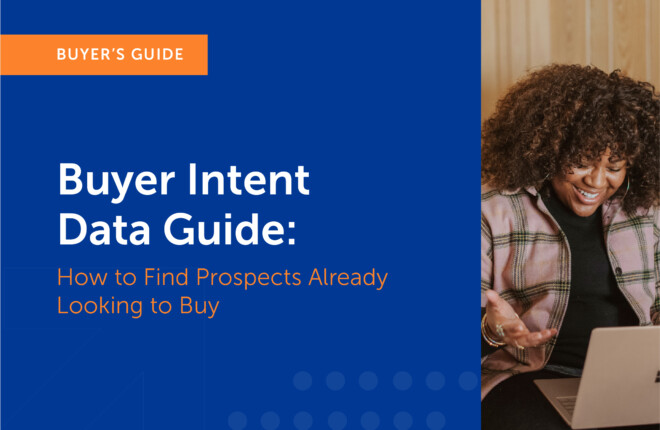SaaS solutions literally power the business world.
The emergence of AWS, platform APIs, app marketplaces, and a variety of other emerging trends have made it easier than ever to create SaaS solutions, and virtually every niche and use case is now served.
Since 2010, there has been a steady rise in the average spend on SaaS applications per company year-over-year. The following statistics will help you understand the SaaS trends driving the business world:
- Between 2015 and 2017, the average number of SaaS apps used by businesses has doubled, from 8 to 16, between 2015 and 2017.
- In 2018, global SaaS opportunities grew to 206 million. Experts project those opportunities to reach 380 million by 2021.
- The predictions for 2019 to 2023 states that the global SaaS market will be worth $60.36 billion, registering a 9% CAGR.
What is SaaS Lead Generation?
SaaS lead generation is the process of attracting and converting potential customers specifically for software-as-a-service (SaaS) companies. It involves strategic marketing and sales efforts to generate qualified leads, who can then be nurtured and eventually converted into paying customers for SaaS products or services.
In the SaaS market, SaaS lead generation refers to a SaaS company’s efforts to attract more website visitors, encourage them to submit the requirements, and collect their contact information (mainly email address).
What is SaaS Product Marketing?
SaaS product marketing is the practice of increasing awareness and assisting in the sale of software. It aids in bringing a product to market, positioning a product, and increasing awareness of a SaaS company.
Where Are My Leads Coming From in a SaaS Company?
There can be different channels that can generate leads for your SaaS company. There are several channels, including but not limited to, paid ads, your company website, blogs, PRs, case studies, videos, and webinars.
How To Find SaaS Leads
To find SaaS leads, target persona individuals or businesses in the software-as-a-service industry typically employ various strategies such as content marketing, social media advertising, search engine optimization (SEO), paid advertising, email marketing, and attending industry events. Additionally, they may leverage lead generation platforms, partnerships, referrals, and networking to identify and connect with potential customers interested in their SaaS products or services.
Here are the top 7 SaaS lead generation strategies:
1. Segment Your Audience
Before you reach your audience, it is important to specify who are the ideal prospect companies for your service or technology. If your business is at a kick-off phase, there’s no point in approaching the giant companies unless you have a big brand to show in the existing clientele.
Once you create a strong identity in the market, start targeting the big deals.
As segmenting your audience is the foundation of your marketing strategy, you need to be specific and on target. To filter your audience accurately, you need to have reliable data.
Only six out of 10 (62%) of surveyed SaaS companies expressed confidence in their ability to create a list for a campaign that accurately reflects their target audience.
A recent study showed that,
- 71% of B2B businesses are targeting their audience based on the Geography
- 59% of B2B sellers segment their target audience based on Industry Vertical
- 50% of businesses prefer account-based marketing
- 48% chase the audience based on their online activities
- 41% consider company size as the primary factor while segmenting the audience
Getting all these parameters in one place is time-consuming and challenging for your sales reps.
As a result, most successful SaaS companies prefer to use a reliable data partner that provides all the possible parameters in one place.
Data platforms give your sales reps the freedom to define their audience as needed and focus on closing.
2. Make Sure You are Reaching the Decision Maker
Every business is at a different phase of its business life cycle. However, there are three primary structures you should be aware of:
The Sole Decision Maker:
This person is responsible for the final purchasing decision. The ultimate decision-maker is often the CEO, president, department head, or special projects director depending on the organizational structure and company size.
A sole decision-maker who requires consent from the board:
In this case, you not only need to secure sign-off from the ultimate DM but crucially, they require approval from their board. This situation primarily occurs in larger,compliance-heavy businesses with higher value products.
An Influencer with Multiple Decision Makers:
Even though there may be one person who ultimately makes the buying decision they seek consensus from the different stakeholders impacted by the buying decision.
3. Use Email Marketing Campaigns Followed By a Call
For selling tech to B2B decision-makers, email marketing is still one of the best ways to tap the opportunities. Don’t just generalize the email content.
The decision-makers in any business, big or small, receive a lot of promotional emails that talk about the product and services. If you do so, your email will be marked spam like any other promotional email.
To prevent landing into spam or getting ignored, learn how B2B businesses leverage data to enter new market opportunities. Use accurate B2B data to study the persona and company to draft a personalized message addressing their common challenge or pain points and then offer a solution. Also, entice them to take the next action such as scheduling a demo or subscribing to a trial/free version of your software.
Offering a phone number or making a follow-up call will increase the chances of getting your foot in the door. However, it is quite challenging to get direct dials for decision-makers. Here’s where the SalesIntel platform adds value to your sales and marketing engine. SalesIntel not only provides 95% human-verified data but also provides the most direct dial numbers in the industry.
4. Describing the Benefits and Values
If You’ve identified your target accounts and your DM’s, you need to understand why they should want to buy your product or solution. Do you offer better performance, save them time, improve productivity, or help them make more money? If your product or service qualifies these four parameters, you are likely to close the deal.
When businesses are understaffed, they end up outsourcing the part as a temporary solution where your software could have helped them get a permanent solution. Study what issues they have, what value your solution can generate for them, and what their competitors are doing. If you can offer a permanent solution for their challenge, they will likely buy your solution.
5. Describe Outcomes
In order to successfully pitch your product or service, you have to focus on their expected outcomes. How should they expect to benefit from this purchase? What problems and pain points are you solving? Show them the outcomes that are measurable, realistic, and solve their pain. The more specific they are, the easier it becomes to close.
6. Highlight Your Competitive Advantages to Generate SaaS Leads
When your prospects start evaluating solutions, they have an extensive pool of vendors to review. You need to explain the differentiators using case studies, statistics, and reference customers to gain a competitive edge. If you can convince them about how you are more efficient, reliable, or affordable, they are likely to close the deal with your business.
7. Partner with Non-Competing Vendors
Partnering with non-competing vendors is a smart move. Build a relationship with the vendors who are already selling a complementary solution. Approach those vendors and explain how your combined solutions are that much more valuable. Let them know that if they are willing to bring you in on deals you will be willing to do the same.
For example, if you are selling a tool or technology that will help the HR department, team, up with a payroll provider who is already a vendor for your prospect. As soon as their current client has expressed a pain point where your solution can be useful, they’ll make a direct introduction.
SalesIntel’s technographic data can help you identify the technology platforms your target customers are using and help you to target complementary vendors you may be able to partner with.
Frequently Asked Questions About SaaS Lead Generation
What are some effective lead generation strategies for SaaS companies?
Some effective lead generation strategies for SaaS companies include content marketing, social media marketing, email marketing, SEO, paid advertising, events and webinars, and referral marketing.
Methods you can use to prospect for SaaS companies
To prospect for SaaS companies, you can utilize methods like targeted email outreach, content marketing, search engine optimization (SEO), social media advertising, attending industry events, participating in relevant online communities, leveraging partnerships and referrals, and utilizing lead generation tools and platforms specific to the SaaS industry. These approaches help identify and engage potential customers interested in SaaS products or services.
How important is content marketing for lead generation in the SaaS industry?
Content marketing is a critical part of lead generation for SaaS companies. By creating and distributing valuable content, such as blog posts, e-books, and webinars, companies can attract potential customers and establish themselves as thought leaders in their industry.
The best social media platform for SaaS lead generation may vary depending on the company’s target audience and industry. LinkedIn is often a good platform for B2B SaaS companies, while Instagram or Twitter may be more effective for B2C companies.
What is the role of SEO in SaaS lead generation?
SEO (Search Engine Optimization) is important for SaaS lead generation because it helps companies rank higher in search engine results pages (SERPs) and attract more organic traffic to their website. By optimizing their website and creating valuable content, companies can increase their visibility and attract potential customers.
How can SaaS companies use webinars to generate leads?
SaaS companies can use webinars to generate leads by creating valuable content and promoting it to their target audience. By offering webinars on topics related to their product or industry, companies can attract potential customers and collect their contact information.
What is referral marketing and how can SaaS companies use it for lead generation?
Referral marketing is a strategy in which companies encourage their existing customers to refer their friends and colleagues to their product or service. SaaS companies can use referral marketing by offering incentives to customers who refer new business, such as discounts or free subscriptions. This can be an effective way to generate high-quality leads and increase customer retention.
Simplify Your SaaS Lead Generation
All the above strategies are linked to identifying the right opportunities and reaching the right decision-makers using accurate data. SalesIntel simplifies the B2B SaaS lead generation by providing you with the contact data of the decision-makers
SalesIntel gives you access to a complete buying center. Just sign in and identify your ICP in our portal, get in touch with other decision-makers with direct dials and start the conversation. The whole idea of using our data platform in selling tech to B2B decision-makers is to spend less time prospecting and more time selling.
To get started, get access to our FREE human-verified data today!




